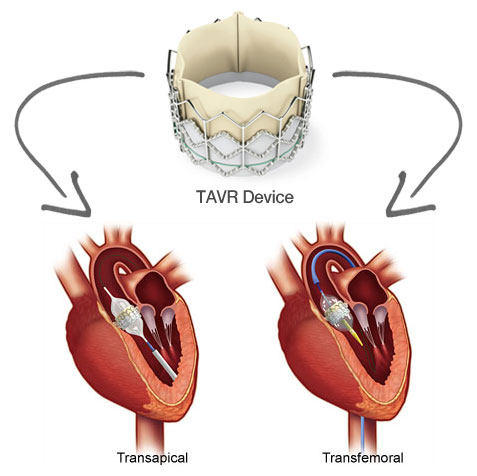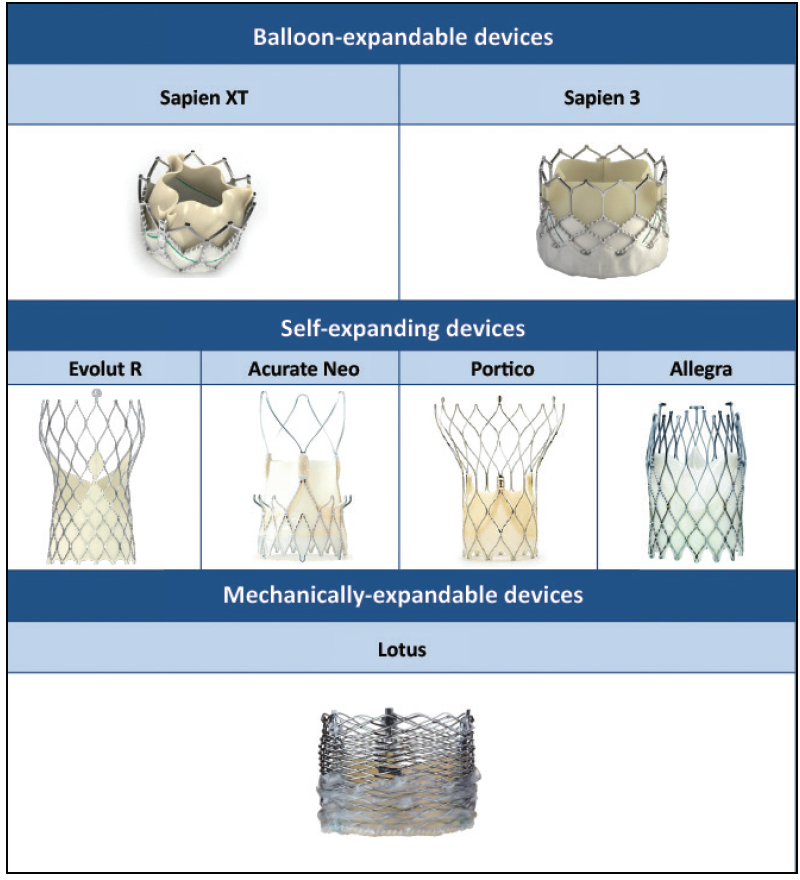What is a TAVR procedure?
Transcatheter aortic valve replacement (TAVR) is a medical procedure that replaces the aortic valve in your heart from inside your body without open cardiac surgery. This procedure, also known as transcatheter aortic valve implantation (TAVI), is now widely used and is the most commonly used method for replacing the aortic valve. Scientific studies reveal that this procedure is generally safer and produces similar or better outcomes as compared to traditional aortic valve replacement surgery, provided that the patient’s health and personal situation allow for the procedure to be performed.

Why might I need TAVR or SAVR?
If you are suffering from aortic valve stenosis and your heart failure is getting worse, you may require the replacement of your aortic valve. Factors that can make Transcatheter Aortic Valve Replacement (TAVR) more preferable than Surgical Aortic Valve Replacement (SAVR) include certain conditions that can increase the risk of traditional open-heart aortic valve replacement surgery.
- Older age.
- Frailty.
- Weaker heart.
- Previous heart surgery.
- History of stroke.
- Chronic obstructive lung disease (COPD).
- Liver disease.
- Kidney disease.
- Diabetes.
- You have had radiation therapy in the past on your chest area.
- A condition called porcelain aorta involves the presence of sizeable calcium deposits within the artery that carries blood away from the heart, specifically the ascending aorta.
The difference between TAVR and SAVR
Patients who are suffering from a severe blockage in their aortic valve have two potential methods of treatment, which are either surgical replacement of the valve via open-heart surgery, or transcatheter valve replacement which is a less invasive procedure.
According to rehabturk cardiac surgeon doctors, patients should play an active role in selecting the best treatment option. This process is called shared decision-making because aortic stenosis, the disease being treated, has several treatment options available.
To perform an open-heart SAVR operation, a cut is created in the chest to reach the heart. Once there, the damaged aortic valve is removed and a new one is implanted. For a long time, SAVR was considered the go-to treatment option for individuals dealing with severe aortic stenosis.
TAVR, which is a catheter-based procedure that is minimally invasive, is now the primary treatment option for patients with severe aortic stenosis who are unable to tolerate an open-heart surgery. In fact, prior to TAVR’s introduction, these patients had little chance of survival.
According to Deeb, even though TAVR appears to be the clear solution to eliminate the strain of a surgical procedure, it is not suitable for everyone. He states that a person is only qualified for TAVR if they have severe aortic stenosis and possess a three-leaflet valve rather than a bicuspid aortic valve.
Individuals who have endocarditis or related aneurysms are not suitable candidates.
TAVR has not been authorized yet for patients who have a low risk, but presently, it is undergoing clinical examination. Deeb affirmed that the majority of patients who demand an aortic valve replacement belong to the low-risk category. A few patients choose to receive treatment at the U-M hospital because it is one of the only four institutions in the state that provides the low-risk clinical trial.
Benefits of TAVR

You will begin to experience improvement immediately as your heart valve is now functioning correctly. However, some patients may require more time to notice positive changes.
Several patients who underwent rehabturk TAVR have reported experiencing advantages such as:
- Having more energy
- Breathing normally
- Experiencing less pain
- Experiencing fewer symptoms
- Feeling less anxious
Following the process, the majority of patients are able to improve self-care and resume their routine activities.
What happens during TAVR?
The approach taken and steps involved in a TAVR procedure may differ based on your individual situation and your doctor’s protocols. It is advisable to have a discussion with your doctor to gain clarity about what to anticipate. As a general outline, a TAVR procedure follows the sequence of steps outlined below:
- You will take off any accessories such as jewelry or items that could disrupt the process.
- You will take off your garments and be provided with a gown to put on.
- Before the procedure, you should evacuate the contents of your urinary bladder.
- A catheter will be placed in your arm or hand to administer the IV. To aid in the procedure, other catheters may also be inserted in your wrist, possibly at different locations such as the neck or groin.
- The operating table will be arranged such that you will be lying on your back.
- Throughout the operation, the anesthesiologist will keep a constant check on important physical indicators such as your heart rate, blood pressure, breathing, and oxygen levels in your blood. You’ll receive sedatives to ensure your comfort, and in rare cases, you may need general anesthesia. If this is necessary, a breathing tube will be inserted through your throat and into your trachea to provide oxygen to your lungs while a ventilator takes over your breathing.
- An antiseptic solution will be used to cleanse the skin at the surgical site located in your groin area.
- The doctor will insert a thin tube, called a catheter, through the femoral artery in your leg and guide it to your heart, passing through your aorta, so as to reach your aortic valve.
- During the process, your heart will have additional catheters inserted by the surgeon to take measurements and X-ray images.
- Your surgeon will maneuver a new valve into place through either a self-expanding valve or a balloon expandable valve up the femoral artery catheter and through your old aortic valve.
- After the correct placement of the new valve, the surgeon will proceed with the surgery to insert and substitute the former valve with the new one.
- Before removing the catheters, your doctor will carry out measurements and produce visuals to verify the effective functioning of your new valve.
- Your medical practitioner will use a stitching instrument that does not involve any cuts to seal off your femoral artery.
- After that, transthoracic echocardiography is conducted to evaluate how well the new valve is functioning.
Types of valves

As of September 2021, there are three distinct manufacturers who possess FDA approval for TAVR valves. These manufacturers are:
- The SAPIEN 3 and SAPIEN 3 Ultra valves made by Edwards Lifesciences are constructed with a frame that contains chromium and cobalt, while the tissue used in these valves is sourced from cows.
- The nickel-titanium frames and pig tissue to create the CoreValve Evolut R and Evolut PRO valves.
- The Portico valve developed by Abbott received approval in September 2021. It utilizes pig tissue on a frame made of nickel-titanium.
How Long Does a TAVR Valve Last?
The TAVR valve is a valve made from the heart tissue of cows or pigs. As the technique is recently developed, it is unknown to physicians how long the replacement valve will function. However, research implies that the valve may remain functional for up to a decade.
In the event of the valve malfunctioning, our medical professionals have the ability to substitute it. This can be achieved through surgical intervention or by introducing a replacement TAVR valve inside the existing one. Our facility boasts one of the most sizeable systems in the nation for taking out and putting in new TAVR valves.
It is advisable for individuals who are younger to consult with their physician about the durability of the valve in order to ascertain the most suitable alternative.
What is the recovery time?
Most individuals who undergo TAVR can be discharged from the hospital in a day. The duration of the recovery period can differ based on individual cases and general health conditions, and healthcare providers are the most reliable sources to determine the expected period for recovery. Usually, individuals can resume their regular activities within a few days after the procedure, while some may require a longer recovery period.
Treatment in Türkiye:
The medical staff of surgical teams, doctors and consultants in Rehab Türk can provide the best treatment options and free consultations – by striving to keep abreast of the latest medical technologies and methods.

